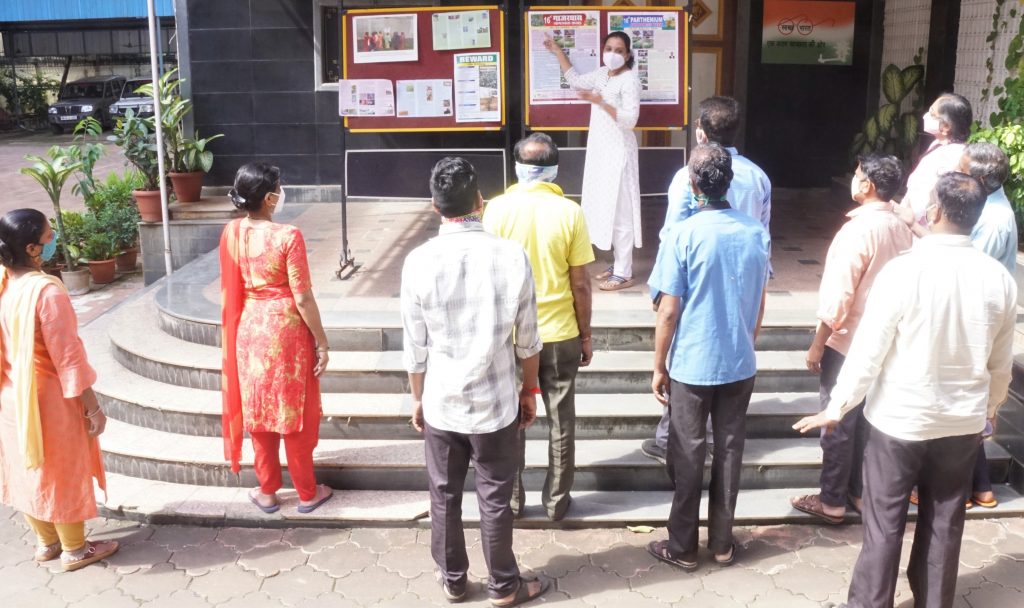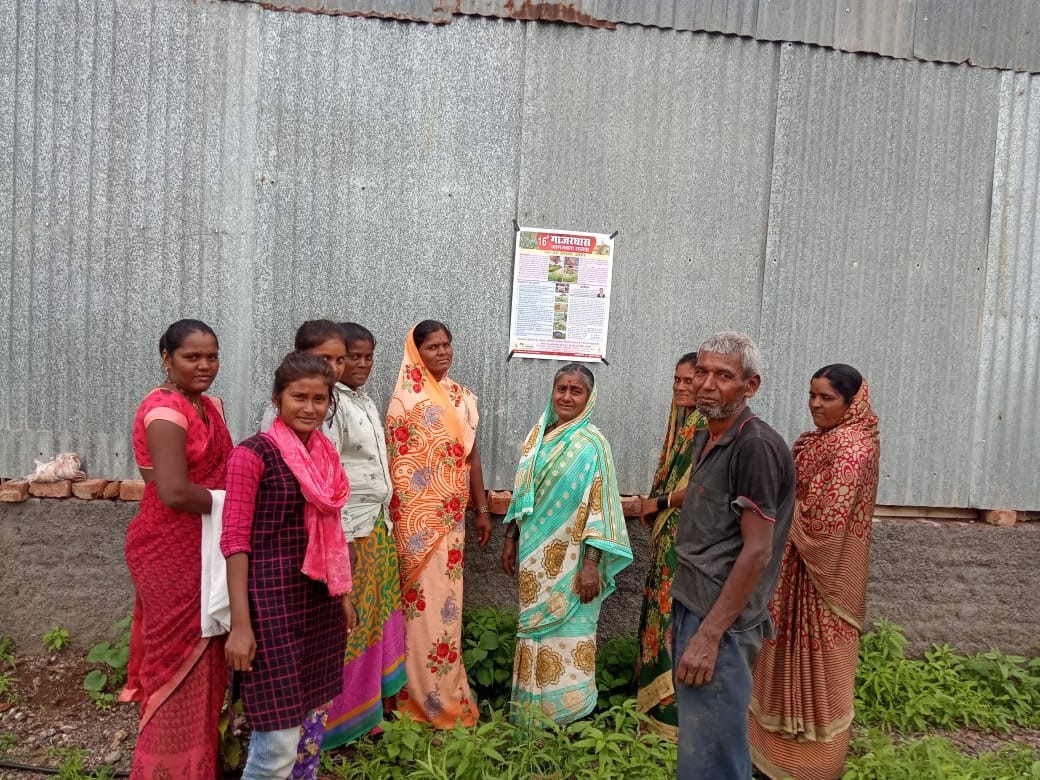
ICAR-CIRCOT organized campaign on “Parthenium Awareness Week” from 16 to 22 August, 2021 as a part of celebration of “Bharat Ka Amrut Mahotsav”
Dr. Kirti Jalgaonkar, Scientist explaining harmful effects of Parthenium and ways of its management to the Housekeeping & supporting staff and others at ICAR-CIRCOT.

Parthenium hysterophorus L., commonly known as carrot weed, white top or congress grass in India, is a herbaceous, erect and annual plant belonging to the family “Asteracae” (compositae). It is most popularly known as “gajar ghas’ due to its appearance like carrot plant. The origin of Parthenium is considered to be from Mexico, America, Trinidad and Argentina. After noticeable occurrence of Parthenium in Pune (Maharashtra) in 1956, it has spread like a wild fire throughout India. Initially Parthenium was a problem in waste and vacant land but now it has become a problematic weeds in crops also. In forest, it has become a serious problem in grasslands, particularly in national parks, on which herbivores-carnivores food chain survives. In general, about 35 million hectare land was estimated to be infested with Parthenium today. The increase of Parthenium infestation in crop area in recent past is alarming.
In general, Parthenium is a poisonous, pernicious, problematic, allergic and aggressive weed posing a serious threat to human beings and their livestock. In India and Australia, this weed has been considered as one of the greatest source of dermatitis, asthma, nasal-dermal and naso-bronchial types of diseases. Besides ill effects, it also causes several other problems like blockage of common pathways and reduces the aesthetic values of park, gardens and residential colonies.
“Parthenium Awareness Week” poster explaining harmful effects of Parthenium was displayed in the field by M/s. Prayag Agro Farms, Sangli (M.S.), Agri start-up funded by ICAR-CIRCOT-RABI

- Back to previous page
- |
-
Page last updated date:01-04-2024 03:00 PM












